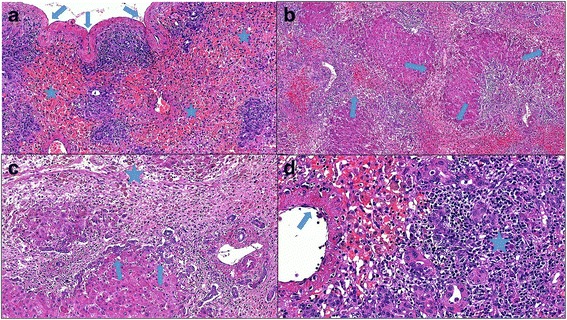Fig. 1.

a A large area with multiacinar necrosis accompanied by hemorrhage and parenchymal collapse (stars). This resulted in liver shrinkage and wrinkling (arrows) of the Glisson’s capsule (hematoxylin and eosin stain, original magnification ×100). b Architectural distortion with bridging necrosis (arrows) linking central and portal zones, collapse, and hepatocellular regeneration (hematoxylin and eosin stain, original magnification ×50). c Periportal necrosis and central portal bridging (star), prominent ductular reaction (arrows), loose connective tissue stroma with liver cell loss, inflammation, and clusters of pigment-laden macrophages (hematoxylin and eosin stain, original magnification ×100). d This portal tract (on the right side of the image) is expanded by significant mononuclear inflammatory infiltrate (star) and ductular structures (whose cells have a variable morphology including intermediate forms). A central vein shows venulitis (arrow) and is located adjacent to the periportal zone because of panacinar necrosis (hematoxylin and eosin stain, original magnification ×200)
